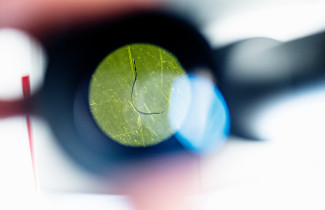The doctoral dissertation in the field of Chemistry will be examined at the Faculty of Science, Forestry and Technology, Joensuu campus.
What is the topic of your doctoral research? Why is it important to study the topic?
The research object is an enzyme called L-arabinonate dehydratase from Rhizobium leguminosarum bv. trifolii. It is an aldopentonate dehydratase that catalyzes the dehydration reaction of L-arabinonate. Aldopentonate dehydratases are the bottleneck enzymes in the non-phosphorylative catabolism pathways of pentose sugars, which limits the metabolic rate of these pathways. The non-phosphorylative pathways can convert the pentose sugars to key platform chemicals that can be further converted to various high-value chemicals.
Compared to other traditional catabolism pathways of pentose sugars, the non-phosporylative pathways have the advantages of less reaction steps and less complex regulation. The pentose sugars are abundant monosaccharides of the hemicellulose that is a major component of the lignocelluloses. Lignocellulose is the most abundant inedible biomass and its cheap and renewable characteristics make it a promising alternative to fossil resources. If the high-efficient utilization of lignocellulose through biotechnology can be realized, it is beneficial to alleviate the environmental pollution and resource shortage faced by human society due to the over-exploitation of fossil resources.
What are the key findings or observations of your doctoral research?
The C-terminus of the L-arabinonate dehydratase from Rhizobium leguminosarum bv. trifolii (RlArDHT) play a significant role in its function and the size of the amino acid residue at the C-terminus is crucial. The tetrameric RlArDHT can be engineered to a dimeric dehydratase retaining its catalytical activity by the disruption of the salt-bridge network between dimer-dimer interface.
The research demonstrates that the alteration of substrate specificity of aldopentonate dehydratase is possible, and opens up new possibilities for future protein engineering studies. The produced dimeric L-arabinonate dehydratase is a more feasible material for detailed structure-function research, especially for high-resolution mass spectrometry. Besides, the L-arabinonate dehydratase with lower oligomeric state may expand its application possibilities.
How can the results of your doctoral research be utilised in practice?
There is increasing interest and investments in biobased value-added chemicals produced by microbial pathways. The rate-limiting step in oxidative non-phosphorylative pathways is the dehydratation of sugar acid, which limits the productivity of the pathway. Our structure-function studies of aldopentonate dehydratase provide a valuable tool for future enzyme engineering, enhancing catalytic efficiency and/or altering specificity.
What are the key research methods and materials used in your doctoral research?
In this thesis work, L-arabinonate dehydratase from Rhizobium leguminosarum bv. trifolii (RlArDHT) was studied by bioinformatics, site-directed mutagenesis, protein expression, and various enzyme characterization methods including kinetic analyses, UV-vis spectroscopy, X-ray crystallography and mass spectrometry.
The doctoral dissertation of Yaxin Ren, MSc, entitled Structure-function studies of L-arabinonate dehydratase involved in oxidative non-phosphorylative pathways will be examined at the Faculty of Science, Forestry and Technology, Joensuu Campus. The opponent will be Dean Kristiina Kruus, Aalto University, and the custos will be Docent Nina Hakulinen, University of Eastern Finland. Language of the public defence is English.



